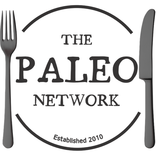The ancient concept of Oil Pulling is enjoying somewhat of a renaissance in the modern health movement. The concept is a simple enough; you use a high quality, plant based oil (i.e. coconut oil) as a ‘mouthwash’ for between 15 and 20 minutes. But are there more benefits to this tradition than you might expect?
The practice of Oil Pulling originated in India thousands of years ago. It is mentioned in ancient Ayurvedic texts, first referred to as Kavala Gandoosha or Kavala Graha. It is used mainly for improving oral health; it has been proven to cut through plaque and toxins in the mouth very effectively. It is also a natural teeth whitener, and has a profound impact on halitosis – whilst more serious conditions such as mouth ulcers, bleeding gums and even gingivitis have been treated using Oil Pulling.
However, research a little further, and you will find that Oil Pulling can be used as a detoxifier not just for the mouth, but for the whole body. Oil Pulling has been shown to benefit troublesome skin conditions, such as eczema and acne, as well as hormonal imbalances – particularly those associated with the thyroid gland. Look a little further again, and you’ll find people who have used Oil Pulling to treat bacterial infections, breathing difficulties and to improve their kidney function. The practice is now attracting plenty of attention, especially from Holistic Practitioners, due to the wide range of conditions it has been shown to improve.

How to Oil Pull
If you’re interested in trying out Oil Pulling for yourself, it’s a very simple (albeit relatively time consuming) practice to follow. Select a high quality, cold pressed oil; extra virgin olive oil, avocado oil and sesame oil are all great choices, but personally, I opt for melted coconut oil. Its antimicrobial powers are already proven, there’s always some in my cupboard, and I love the taste!
Take 1 – 2 tbsp of the oil in your mouth, and swish for 20 minutes. According to research, this time period is crucial. Any shorter, and there is not adequate time to break down the toxins and bacteria. Any longer, and these toxins may be reabsorbed into the body. 20 minutes may seem like a fairly long time, but it goes pretty quickly if you incorporate it with other tasks, such as a leisurely morning walk. Just try not to bump into anyone who wants to chat along the way! Once the 20 minutes are up, rinse well with warm water before brushing as normal.
Ideally, this process should be repeated at least three times per week for best results. Due to the powerful detoxing effects oil pulling has on the body, some people have reported symptoms of a detox reaction during their first few days of Oil Pulling. These symptoms are pretty rare however, and don’t seem to reach any further than sinus problems (such as congestion) and minor headaches.
I’d love to hear your opinions on Oil Pulling. Have you tried it? Have you had any success? Let me know below!






